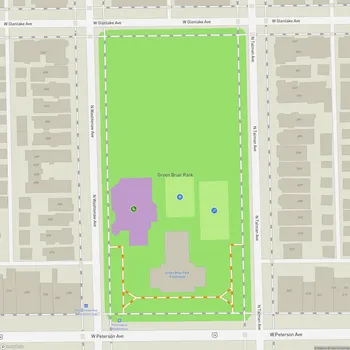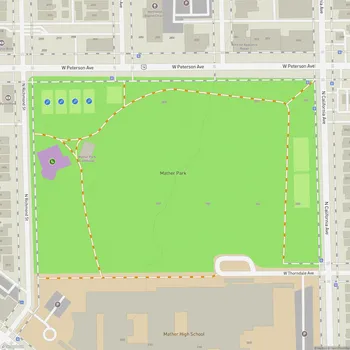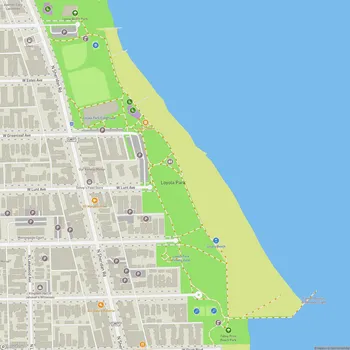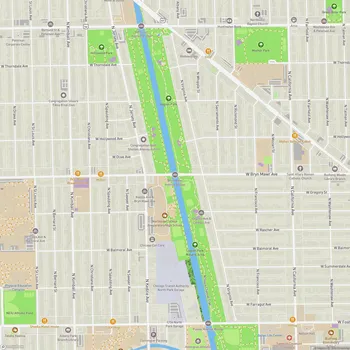Indian Boundary Park
Indian Boundary Park Map
About Indian Boundary Park in Chicago
Indian Boundary Park is a 13-acre urban park located in the West Ridge neighborhood on Chicago's North Side. Established in 1922, the park takes its name from a territorial boundary line established in the 1816 Treaty of St. Louis between Native American tribes and the United States government.
The centerpiece of the park is its Tudor Revival-style fieldhouse, designed by architect Clarence Hatzfeld and completed in 1929. The fieldhouse features distinctive Native American-themed ornamentation, including an Indian head sculpture above the main entrance. In 2005, the fieldhouse was designated a Chicago Landmark and is also listed on the National Register of Historic Places.
A prominent feature of Indian Boundary Park is its duck-filled lagoon, which was originally a natural marshy area. The park also contains a beautifully restored nature area with native prairie and aquatic habitats. For children, there is a large wooden playground structure and a water spray feature with dancing bear sculptures.
As a designated cultural center, Indian Boundary Park offers various classes and activities for the community, including painting, piano, dance, and voice lessons. Some classes take place on the park's back porch, allowing artists to use the park's scenery as inspiration. The fieldhouse's auditorium is used for programs, theater productions, concerts, and community meetings.
The park's layout is unique in that its eastern lawn seamlessly flows into the front yards of neighboring apartment buildings constructed in the 1920s. This design was so well-received that in the 1960s, the Chicago Park District closed off part of adjacent Estes Avenue to extend this feature.
Historically, Indian Boundary Park housed a small zoo, which began with a single American black bear and later primarily featured farm animals. However, the zoo was closed in 2013, with the remaining animals transferred to Lincoln Park Zoo.




